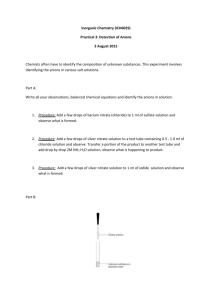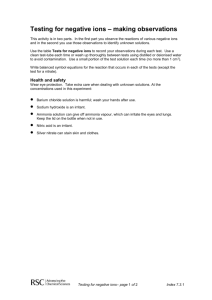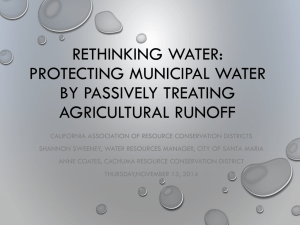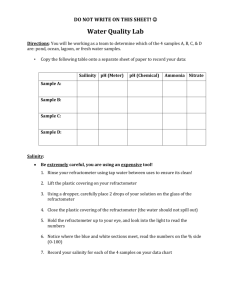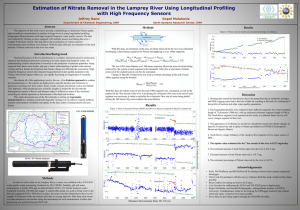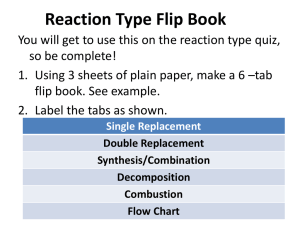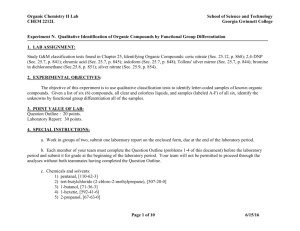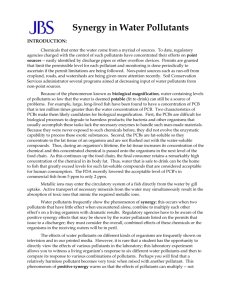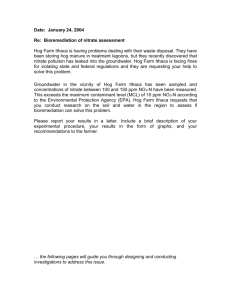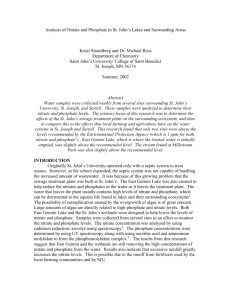Chemical Reaction: A Survey
advertisement
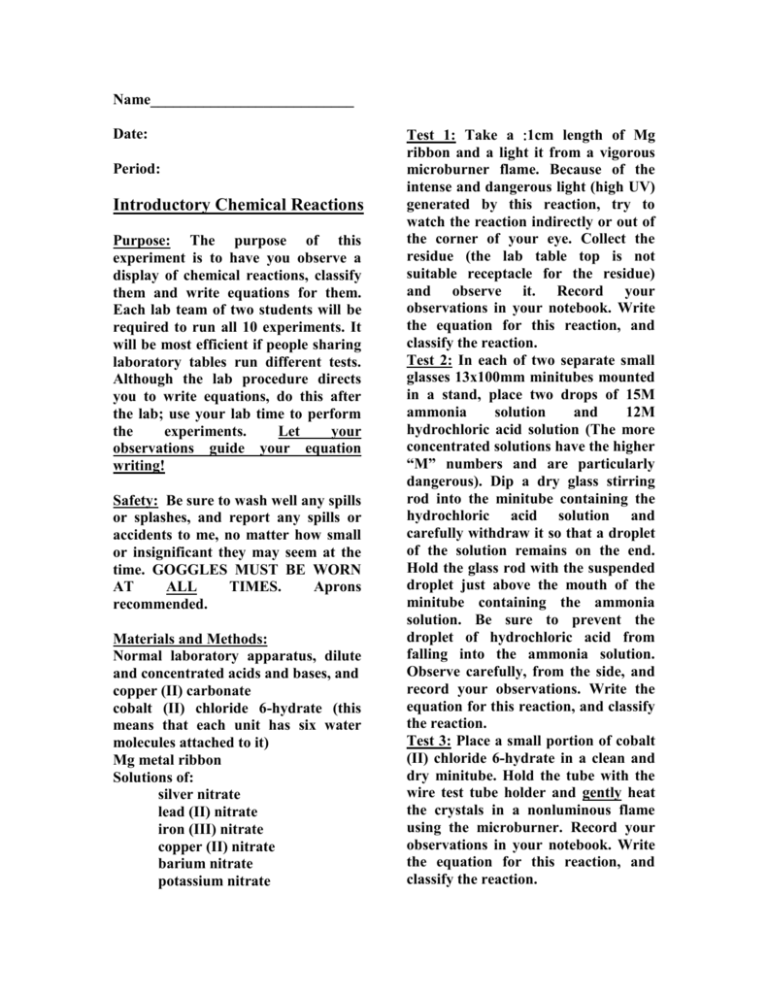
Name___________________________ Date: Period: Introductory Chemical Reactions Purpose: The purpose of this experiment is to have you observe a display of chemical reactions, classify them and write equations for them. Each lab team of two students will be required to run all 10 experiments. It will be most efficient if people sharing laboratory tables run different tests. Although the lab procedure directs you to write equations, do this after the lab; use your lab time to perform the experiments. Let your observations guide your equation writing! Safety: Be sure to wash well any spills or splashes, and report any spills or accidents to me, no matter how small or insignificant they may seem at the time. GOGGLES MUST BE WORN AT ALL TIMES. Aprons recommended. Materials and Methods: Normal laboratory apparatus, dilute and concentrated acids and bases, and copper (II) carbonate cobalt (II) chloride 6-hydrate (this means that each unit has six water molecules attached to it) Mg metal ribbon Solutions of: silver nitrate lead (II) nitrate iron (III) nitrate copper (II) nitrate barium nitrate potassium nitrate Test 1: Take a 1cm length of Mg ribbon and a light it from a vigorous microburner flame. Because of the intense and dangerous light (high UV) generated by this reaction, try to watch the reaction indirectly or out of the corner of your eye. Collect the residue (the lab table top is not suitable receptacle for the residue) and observe it. Record your observations in your notebook. Write the equation for this reaction, and classify the reaction. Test 2: In each of two separate small glasses 13x100mm minitubes mounted in a stand, place two drops of 15M ammonia solution and 12M hydrochloric acid solution (The more concentrated solutions have the higher “M” numbers and are particularly dangerous). Dip a dry glass stirring rod into the minitube containing the hydrochloric acid solution and carefully withdraw it so that a droplet of the solution remains on the end. Hold the glass rod with the suspended droplet just above the mouth of the minitube containing the ammonia solution. Be sure to prevent the droplet of hydrochloric acid from falling into the ammonia solution. Observe carefully, from the side, and record your observations. Write the equation for this reaction, and classify the reaction. Test 3: Place a small portion of cobalt (II) chloride 6-hydrate in a clean and dry minitube. Hold the tube with the wire test tube holder and gently heat the crystals in a nonluminous flame using the microburner. Record your observations in your notebook. Write the equation for this reaction, and classify the reaction. Test 4: Let the minitube cool for a few minutes (while you’re running some other tests) and then add one or two drops of deionized water to the residue obtained from test 3. Record your observations in your notebook. Write the equation for this reaction, and classify this reaction. Test 5: Place a small portion of copper (II) carbonate in a clean and dry minitube. Add 2M hydrochloric acid solution a drop at a time until no further reaction occurs (effervescence resulting from the production of carbon dioxide gas will occur, and water is another reaction product). Record your observations in your notebook. Write the equation for this reaction, and classify the reaction. Test 6: Place a small portion of copper (II) carbonate in a clean and dry minitube. Heat gently. Record your observations in your notebook. Write the equation for this reaction, and classify the reaction. Carbon dioxide is one of the reaction products. Test 7: To the residue from test 6, carefully add one or two drops of 12M hydrochloric acid solution. Record your observations in your notebook. Write the equation for this reaction, and classify the reaction. Tests 8-10: For these tests, use the microscale well plates as your reaction chambers. Add a few drops of one reagent to another in the well plate, and then stir with half of a toothpick. Perform tests 8-10 with the nitrate solutions. Test 8: Add a few drops of 2M hydrochloric acid solution to a few drops of each of the six nitrate solutions. If a reaction occurs, write the net ionic equation for the reaction. Test 9: Again load a few drops of the six nitrate solutions into the well plate. This time, add a few drops of 1M sodium hydroxide solution. If a reaction occurs, write the net ionic equation for the reaction. Test 10: Load the well plate once more with the six nitrate solutions. Add a few drops of 1M sulfuric acid solution to each. If a reaction occurs, write the net ionic equation for the reaction. The well plates must be meticulously cleaned when you are finished. Use a cotton swab to clean out each individual well used in your tests if any residue remains. They do not have to dry when stored but they must be well rinsed with deionized water. Results and Discussion: Present your data in readable format (refer to the lab prep board, “Parts of a Lab Report” if you are unsure of what to include). Include observations and balanced equations with classifications in the result section. Include state designators with all equations. Discuss possible sources of experimental error. You may write the equations freehand in your otherwise typed report. Record observations in a concise and specific manner. Write net ionic equations for any results from tests 8 – 10 where a ppt formed. For example, in a test where solutions of silver nitrate and sodium chloride are mixed, a result may look like this: “Test 11:” AgNO3(aq) + NaCl(aq) → NaNO3(aq) + AgCl(ppt)” “White ppt AgCl” In this experiment, all the double displacement rxns involve nitrates as reactants, so one of the products has to be a soluble nitrate as well (the insoluble ppt can’t be a nitrate).
